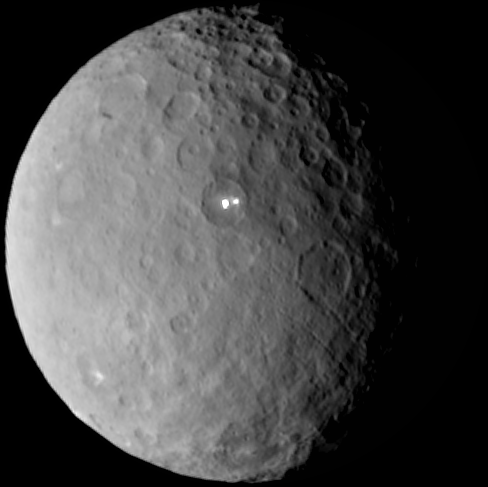Ceres rotates in this sped-up movie comprised of images taken by NASA’s Dawn mission during its approach to the dwarf planet. The images were taken on Feb. 19, 2015, from a distance of nearly 29,000 miles (46,000 kilometers). Dawn observed Ceres for a full rotation of the dwarf planet, which lasts about nine hours. The images have a resolution of 2.5 miles (4 kilometers) per pixel.
Dawn’s mission is managed by NASA’s Jet Propulsion Laboratory, Pasadena, California, for NASA’s Science Mission Directorate in Washington. Dawn is a project of the directorate’s Discovery Program, managed by NASA’s Marshall Space Flight Center in Huntsville, Alabama. The University of California, Los Angeles, is responsible for overall Dawn mission science. Orbital ATK Inc., in Dulles, Virginia, designed and built the spacecraft. The German Aerospace Center, the Max Planck Institute for Solar System Research, the Italian Space Agency and the Italian National Astrophysical Institute are international partners on the mission team. For a complete list of acknowledgments, visit https://www.nasa.gov/dawn and http://dawn.jpl.nasa.gov/mission/.
Image credit: NASA/JPL-Caltech/UCLA/MPS/DLR/IDA



























